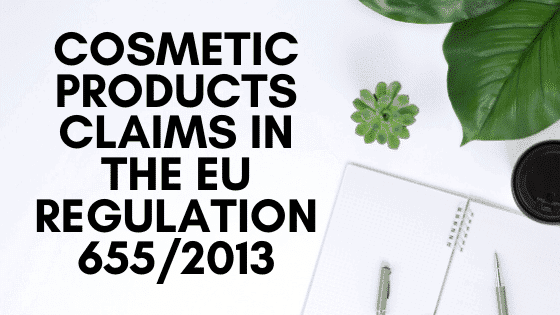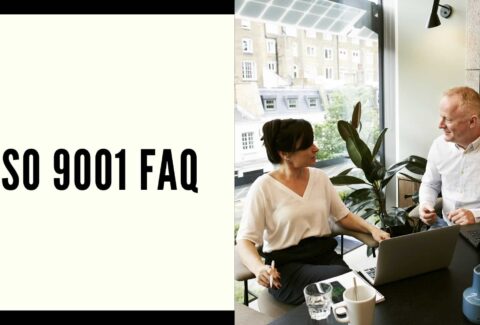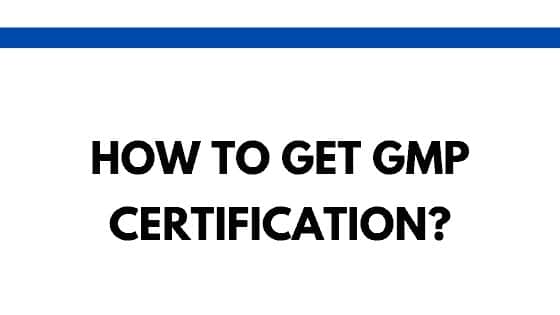EU Regulation 655/2013 Cosmetic Products Claims
EU Regulation 655/2013 specifically deals with cosmetic product claims. Meanwhile, Regulation 1223/2009 covers legislation concerning cosmetic product claims in the EU.
For this article, QSE Academy explains what claims are not allowed in the EU. You’ll also learn how to prove your cosmetic product’s claims.
What is the EU Definition of a Cosmetic Product?
Products that want to be sold as a cosmetic product needs to comply with the definition of a cosmetic product in the EU.
A cosmetic product is any substance or mixture intended to be placed in contact with the human’s body external parts:
- Hair system
- Lips
- Epidermis
- Nails
- External genital organs
- Teeth and mucous membranes of the oral cavity (products that clean, perfume, protect, change appearance, correct body odor and keep parts in good condition)
This definition does cover products that prevent or treat any human being’s disease.
The following are examples of such words or phrases that present a medicinal intent:
- Heals
- Cures
- Restores
- Treats
- Clears
- Prevents
- Protects against disease
- Strengthens the immune system
- Helps control the symptoms of
- Traditionally used for the treatment of
A cosmetic product should not claim that it kills microbes or germs. Otherwise, it would fall under the biocide regulation.
Claims for Cosmetic Products in Regulation 1223/2009
The regulation states, “In the labeling, making available on the market and advertising of cosmetic products, text, names, trademarks, pictures and figurative or other signs shall not be used to imply that these products have characteristics or functions which they do not have.”
Hence, it’s important to protect consumers from misleading claims about the efficacy and other characteristics of cosmetic products.
The EU published Regulation 655/2013, which covers the common criteria for the justification of claims used in cosmetic products.
The common criteria only apply to products assessed and deemed as cosmetic products.
Moreover, the criteria do not aim and specify the wording that can be used for cosmetic product claims.
Understanding EU Regulation 655/2013
According to this regulation, claims on cosmetic products must conform to the following common criteria:
- Legal compliance
Claims that show the product has been authorized or approved by a competent authority within the Union shall not be allowed.
This is because a cosmetic product is allowed on the Union market without any governmental approval.
Note that cosmetic products should not have a CE-mark.
Base the acceptability of a claim on the perception of the average end-user of a cosmetic product. The user must be well-informed and reasonably observant by considering social, linguistics, and cultural factors.
Manufacturers can’t put claims about a specific benefit when this benefit is mere compliance with minimum legal requirements.
For instance, the statement: “This product does not contain vinyl chloride”.
This claim is invalid since the EU does not allow the use of vinyl chloride in cosmetic products.
- Truthfulness
Do not base a cosmetic product’s general presentation or individual claims on irrelevant or false information.
For example, products that contain paraben should not claim ‘paraben-free’.
The ingredient must be intentionally present for product claims that it contains a specific ingredient.
Furthermore, ingredient claims about a specific ingredient’s properties must not denote that the finished product has the same properties when it does not.
For instance, a product must not claim to have moisturizing Shea butter when the product itself has no moisturizing effect.
Marketing communications must not infer that expressions of opinions are verified claims. This is unless the opinion shows verifiable proof.
- Evidential support
Provable and adequate evidence must support both implicit and explicit claims for cosmetic products. This is regardless of the types of evidential support used to substantiate them, such as expert assessments.
Likewise, sufficient and verifiable evidence must support claims about extrapolating ingredient properties. For instance, by showing the ingredient’s presence at an effective concentration.
For studies-based evidence, those should be:
- Well-designed with conducted methodologies
- Relevant to the cosmetic product
- Relevant to the benefit claimed
- Respectful of ethical considerations
In addition, the substantiation level of evidence should be consistent with the type of claim being made; particularly, for claims where lack of efficacy may cause a safety problem.
Meanwhile, these aspects do not need substantiation:
- Statements of an abstract nature.
- Statements of clear exaggeration (hyperbole).
A cosmetic product’s Product Information File (PIF) must include any evidential support.
- Honesty
Presentations of a product’s performance must not be beyond the available supporting proof.
For instance: Claiming that more than a million users prefer the product. This is not allowable if the figure is based only on one million units.
Furthermore, claims must not attribute to the product’s unique or specific characteristics if similar products possess the same characteristics.
Clearly state if a product’s action is connected to specific conditions, such as the use in association with other products.
Hence, do not forget to specify is a shampoo’s effectivity depends on its usage with a conditioner.
- Fairness
Claims for cosmetic products must be objective. Claims should not:
- Objective
- Be degradable to competitors
- Denigrate ingredients legally used
- Confuse consumers with the product of a competitor
- Informed decision-making
Claims must contain clear and understandable information to help an average end-user make an informed choice.
Marketing communications must consider the target audience’s capacity to understand information. It should be clear, understandable, precise, and relevant.
Best Practices for Claim Substantiation Evidence As Per EU Regulation 655/2013
Accurate and relevant evidence must prove that a cosmetic product’s claims are true.
Best practices for claim substantiation evidence:
– Experimental studies
– Consumer perception tests
– Published information
– Scientific publications
Cosmetic product producers should also consider additional recommendations and guidelines from the European Commission.
For example, the European Commission has a recommendation on labeling and substantiating claims for sunscreen products.
Substantiating Product Claims in the EU
Now that you’ve understood the guidelines and requirements concerning product claims in the EU, you won’t commit any mistakes when specifying claims.
Aside from following the criteria, toolkits and blogs from QSE Academy will help ensure you are on the right track of selling cosmetic products in the EU market.
















Comment (1)
Melva C
Perhaps you can tell us more about the evidential support? What is the EU cosmetics directive?